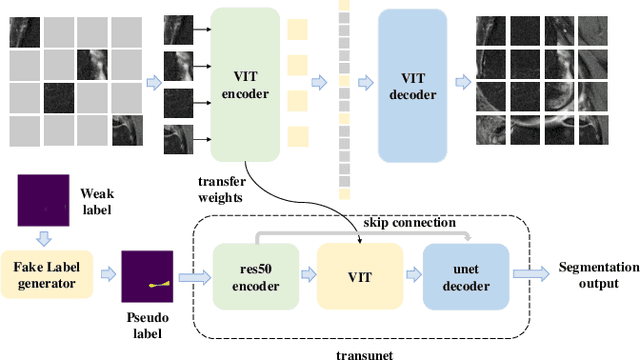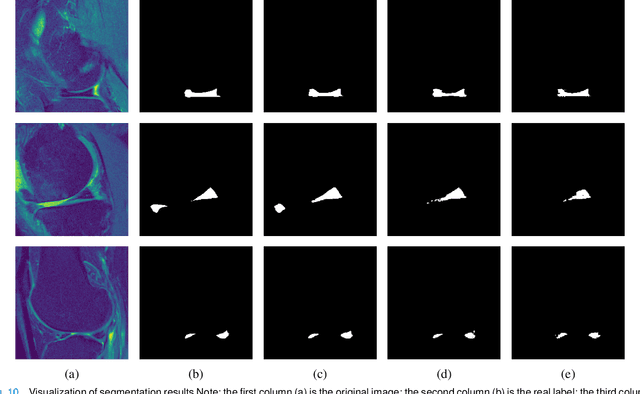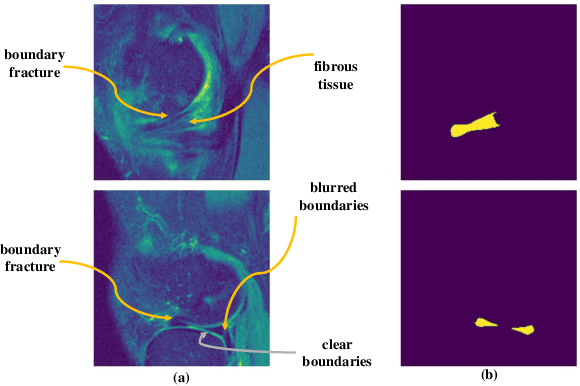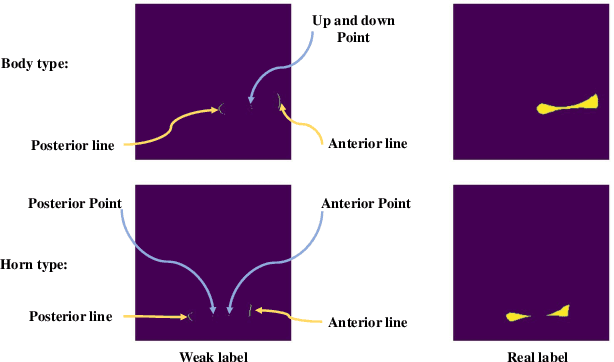Shaolong Chen
An atrium segmentation network with location guidance and siamese adjustment
Jan 11, 2023Abstract:The segmentation of atrial scan images is of great significance for the three-dimensional reconstruction of the atrium and the surgical positioning. Most of the existing segmentation networks adopt a 2D structure and only take original images as input, ignoring the context information of 3D images and the role of prior information. In this paper, we propose an atrium segmentation network LGSANet with location guidance and siamese adjustment, which takes adjacent three slices of images as input and adopts an end-to-end approach to achieve coarse-to-fine atrial segmentation. The location guidance(LG) block uses the prior information of the localization map to guide the encoding features of the fine segmentation stage, and the siamese adjustment(SA) block uses the context information to adjust the segmentation edges. On the atrium datasets of ACDC and ASC, sufficient experiments prove that our method can adapt to many classic 2D segmentation networks, so that it can obtain significant performance improvements.
Automatic segmentation of meniscus based on MAE self-supervision and point-line weak supervision paradigm
May 07, 2022



Abstract:Medical image segmentation based on deep learning is often faced with the problems of insufficient datasets and long time-consuming labeling. In this paper, we introduce the self-supervised method MAE(Masked Autoencoders) into knee joint images to provide a good initial weight for the segmentation model and improve the adaptability of the model to small datasets. Secondly, we propose a weakly supervised paradigm for meniscus segmentation based on the combination of point and line to reduce the time of labeling. Based on the weak label ,we design a region growing algorithm to generate pseudo-label. Finally we train the segmentation network based on pseudo-labels with weight transfer from self-supervision. Sufficient experimental results show that our proposed method combining self-supervision and weak supervision can almost approach the performance of purely fully supervised models while greatly reducing the required labeling time and dataset size.
 Add to Chrome
Add to Chrome Add to Firefox
Add to Firefox Add to Edge
Add to Edge